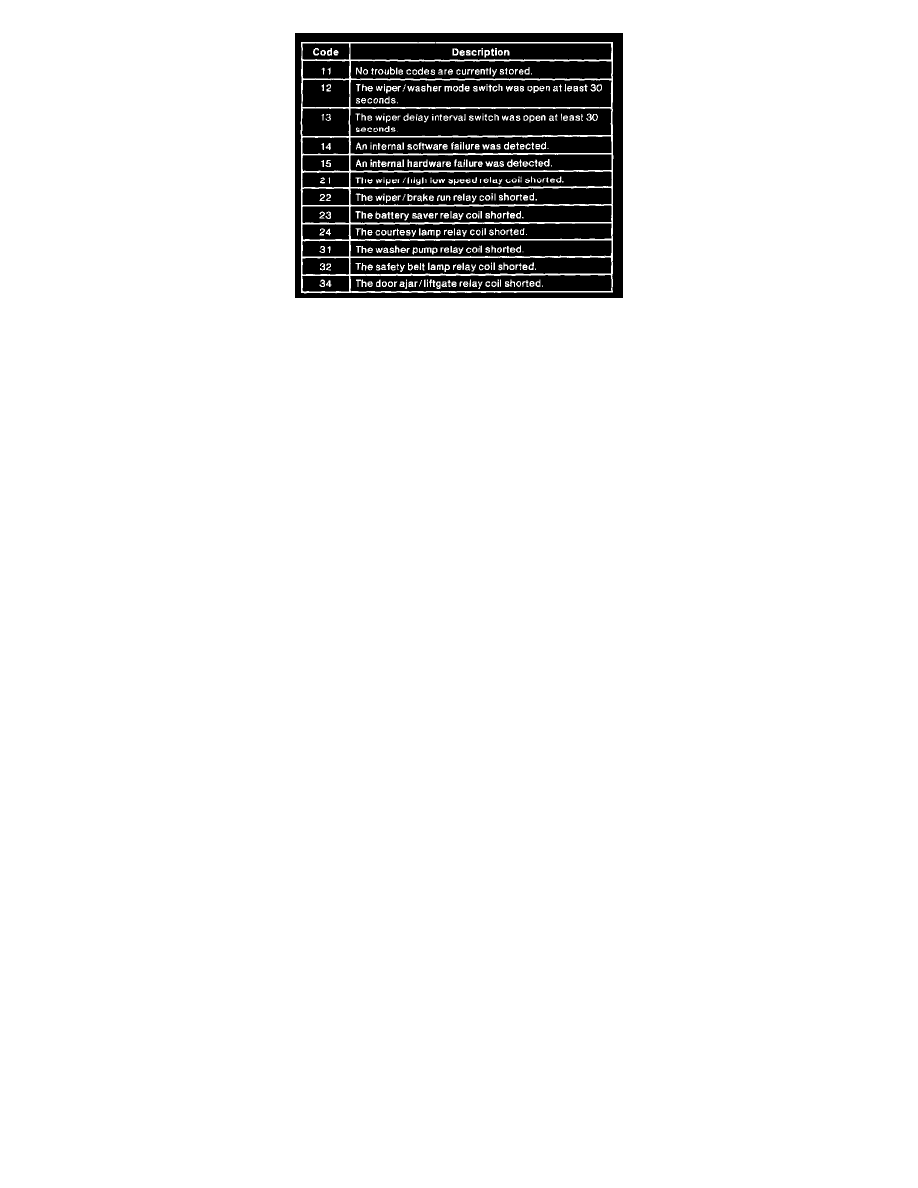Ranger 2WD V6-182 3.0L (1995)

NOTE: The entire set of stored trouble codes will be repeated indefinitely until either the input test mode is entered or the ground is removed from the
diagnostic input. This table shows all of the possible trouble codes.
Erasing CTM Diagnostic Trouble Codes
Trouble codes are erased when either:
1. The ignition has been moved to the start position at any time during the diagnostic mode or
2. Power is removed from the CTM
Overview
Interface
The CTM diagnostic mode is entered by grounding the dedicated diagnostic mode input. This one-pin connector is located under the instrument panel.
The diagnostic mode is exited (returned to normal operation) immediately upon removal of the ground on the diagnostic mode input.
Retrieving Diagnostic Trouble Codes (DTC)
Retrieving Diagnostic Trouble Codes (DTC)
The diagnostic mode is made up of the three following separate steps:
1. Tone and door ajar lamp test
2. Trouble code test
3. Input test
Step 1 is run immediately upon entry into the diagnostic mode.
Step 2 is run without the key in the ignition.
Step 3 is run with the key in the ignition.
The operator may switch between Steps 2 and 3 indefinitely until the diagnostic mode input is ungrounded.
Step 1 - Tone and Door Alar Lamp Test
When the diagnostic mode is first entered, the CTM will generate a tone and light the door ajar lamp for three seconds. If the key is in the
RUN or ACCY position, use the following table to diagnose problems entering the diagnostic mode. After the three-second test, the CTM will
pause for one-second and then proceed to either Step 2 or Step 3 depending on whether the key is in the ignition.
The diagnostic mode is used to test the central timer module (CTM) and associated connections while the CTM is in the vehicle. While in this
mode, the technician can retrieve and clear the internally stored trouble codes and also individually test each of the CTM inputs. The normal
CTM functions are disabled while in the diagnostic mode. The wiper functions are also disabled while in the diagnostic mode. The wiper
motor output is operated by the washer switch input during the input test to allow testing of the wiper motor status switch input.
Step 2 - Trouble Code Output
When the CTM is in the normal mode of operation, it is continually monitoring itself. When a fault occurs it is recorded. The trouble code
output mode shows these codes, if any, to the technician by flashing the door ajar lamp and simultaneously sounding the chime in a certain
order. These codes may then be used to help diagnose potential intermittent failures.
Step 3 - Input Test
The input test allows an operator to individually test the CTM inputs. It is entered when the operator puts the key in the ignition. The inputs
may be cycled in any order. As an input is toggled on or off, the door ajar lamp and tone outputs will be activated for one second for
confirmation. At any time, if the key is removed from the ignition assembly, the trouble code output will be re-entered.
Viewing Diagnostic Trouble Codes (DTC)
Trouble codes are output to the operator through flashing of the door ajar lamp and sounding of the chime. Each code is represented by a two-digit
number such as 21. The high digit is output first followed by a one second pause followed by the second digit. Each two-digit code is separated by a
three-second pause. Each digit is also made up of one to nine one-second lamp flashes.
